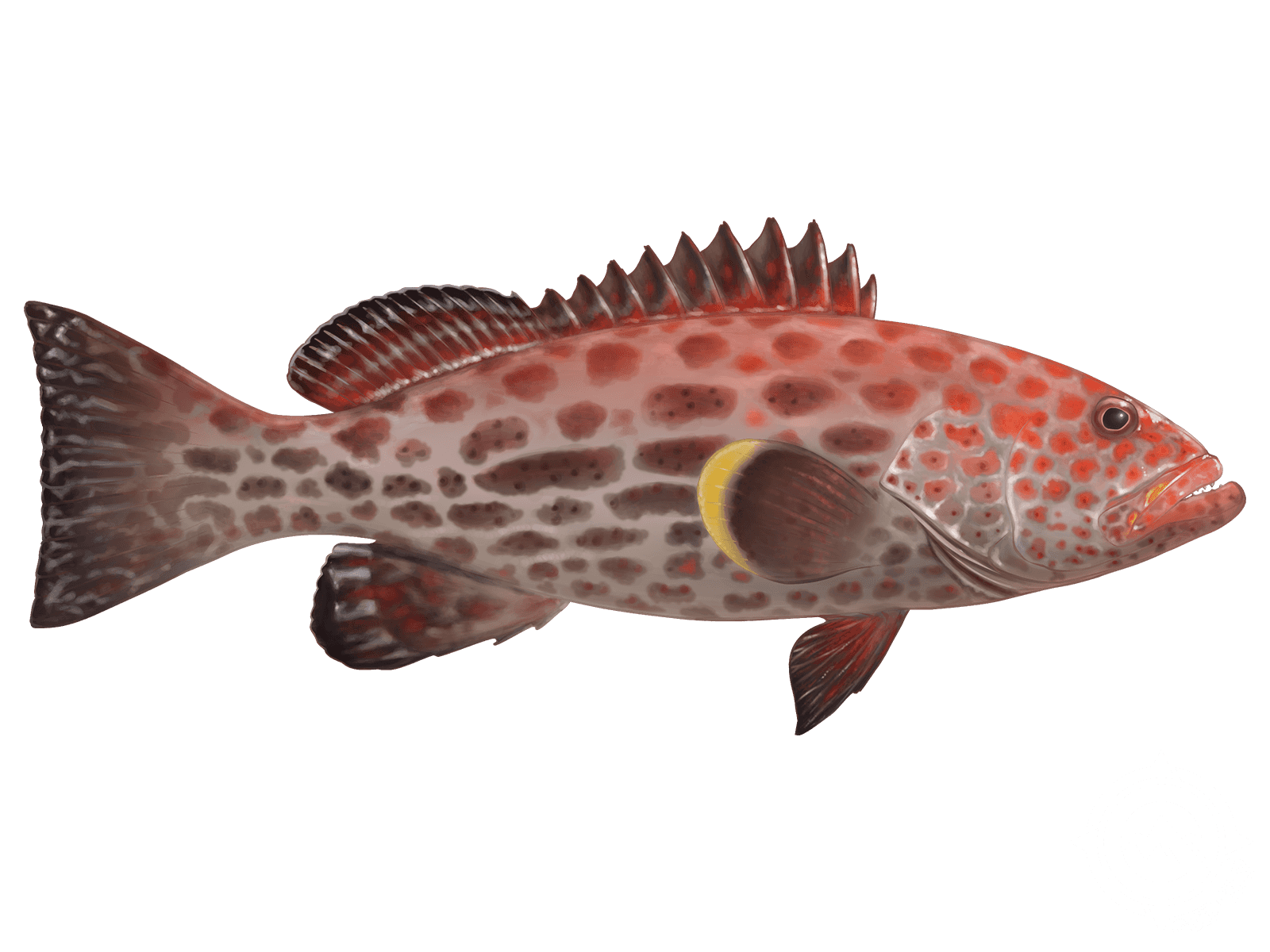Yellowfin Grouper

Species Details
Mycteroperca Venenosa
Serranidae
Perciformes
Onshore, Nearshore, Offshore, Reef, Wreck
18 - 22 lbs.
35" - 39"
Yellowfin Grouper (Mycteroperca Venenosa) Fish Description
The Yellowfin Grouper has a long but compressed body. It has a spiny dorsal fin that has a mix of 15-16 rays. Its anal fins also have 3 spines with 10-12 soft rays. The Yellowfin Grouper also has dark oval spots covering its head and body. They have an underbite which makes them more into surface feeding. The Yellowfin Grouper is known for its bright yellow pectoral fin. However, sometimes – people can also see the bright yellow marks on their dorsal or pelvic fins.
The Yellowfin Grouper has two colors: one for deep water and the other for shallow waters. For deep waters, they have a bright red color. In shallow waters, they have a greyish green color. However, their underbellies are pink.
Yellowfin Grouper Diet and Size
Yellowfin Groupers are carnivorous, usually found eating squid. However, they do like feasting on crustaceans as well. When it comes to hunting for their food, Yellowfin Groupers tend to be opportunistic. They hide amongst structures or even bright red corals to make sure they’re not seen. Once there, they wait for their prey such as an unlucky crab or squid floating by. The moment they see the opportunity, they lunge out and snap it up before returning to their original hiding place.
The most common size for an adult Yellowfin Grouper is around 39 inches. However, their maximum size is around 180 inches. The common size of an adult Yellowfin Grouper can swing between 19-24 inches.
Interesting Facts about the Yellowfin Grouper
- The Yellowfin Grouper’s scientific name is based on the assumption that it’s poisonous.
- Yellowfin Groupers are known to carry ciguatera poisoning which is why they’re not commonly fished.
- Despite not being good for food, Yellowfin Groupers are often caught and used for display in aquarium showrooms.
- Yellowfin Groupers are susceptible to getting overfished. They take long to mature unlike other fish.
- Yellowfin Groupers can quickly change their skin color to help them make the most out of their hunting style.
- Young Yellowfin Groupers can be separated from the adults by looking at their caudal fin. The more straight the caudal fin is, the younger the Yellowfin Grouper.
- Yellowfin Groupers have sexually dysmorphic features. For example, male Yellowfins have a bright yellow patch on their lower jaw. Female Yellowfin Groupers have a red lower jaw.
- During breeding, they are seen to have a white patch on their head.
Yellowfin Grouper – Fishing Techniques: How to Fish for a Yellowfin Grouper
When it comes to catching a Yellowfin Grouper, the first thing to remember is to get bait of their choice. To catch the Yellowfin Grouper, anglers would recommend using Pinfish, Goggle Eyes, or Pilchards. The former three usually work best in the summertime. If those three are not available, you can use grunts or blue runners.
Next, set up your bait. Hooks are good but make sure to tie your bait properly. Since you’ll be sinking your bait down to the depths and near the rocks, you have to make sure that your line also doesn’t just get snagged. Since Yellowfin Groupers are also quite opportunistic, you’ll need to have the bait swim a little bit but not too much. Yellowfin Groupers will not attack a bait that’s wildly moving.
Yellowfin Grouper Habitat and Distribution
Yellowfin Groupers usually stay in the Western Atlantic in the Gulf of Mexico. They prefer rocky areas and shipwrecks. Some recommend looking at rockpiles and coral ledges since they either turn grey or a bright red. Some people even recommend looking at the rocks in Fowey Rocks where there is a variety of grouper but Yellowfin Groupers will be among them as well.







